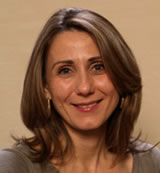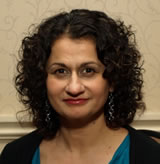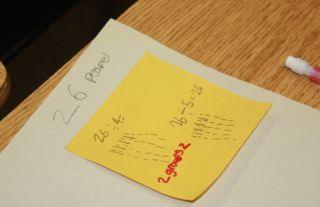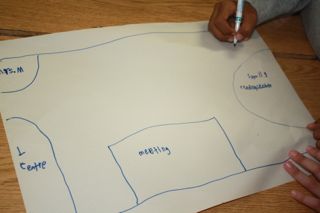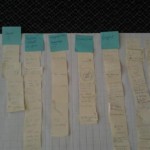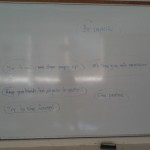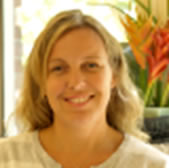During the first month of school, there is a lot to do. Finding myself in a new grade and new school every year, I am seeking out resources, and learning the ropes. One thing that hasn’t changed for me from every differing grade and school, is the need to get to know my students from early on in the first month, so that I am able to best meet their needs in the classroom and transfer the information seamlessly to others. For me, getting to know my students personalities and needs early on, allows me to create a safe learning environment that reflects what the students want to get out of their learning experience and also develop a system that has the information and supports in place for myself, a teacher returning from leave, or a substitute teacher.
This month, I began by learning about my Grade 1 students needs in two ways: creatively– using ideas from The Heart and Art of Teaching and Learning (ETFO, 2011); working with the students to develop a classroom contract that reflects their wants and needs for their learning environment, and practically – developing my own personal informational database on the needs, routines and information about the unique students that I am teaching.
To develop a classroom community in Grade 1 that reflects my students’ wants, I drew from Leah’s helpful ideas (p.43, The Heart and art of Beginning Teaching and Learning), to generate a list of ‘promises’ from the students to one another. I’m finding that these ‘Inclusion Activities’ are helping me to establish the tone of the students’ classroom and decide what they think the classroom should look like, sound like and feel like. Last week in Grade One, each student shared one promise or wish for the classroom (for example, not to butt-in in line, or to ask permission before touching each other’s things) and then they illustrated their promise for a class book. The students are enjoying reading and reminding each other of their ‘Promises’ to one another and learning about the kinds of things that help us to minimize conflict and increase safety in the classroom. For me, this activity illustrated that the students want a lot of the same rules and routines that I want in establishing a harmonious classroom environment and we plan on working on dramatizing what these promises actually look like in practice. It has helped me to establish and reaffirm what is important to my students in creating a safe and inclusive classroom environment and pare down what is really important to my students in their daily school life.
I am also gathering important personal and historical information on my students for their files so that I can have a better understanding of their background and so that I am able to meet their safety and learning needs. This will serve as an aid for me when communicating with parents and guardians, and also will enable me to communicate important information to substitute teachers and the teacher that will be returning from leave when my LTO is over. I sent home a Student Background form for parents to complete on their child for my files. :
- child’s name, birthdate
- siblings, both in the school/out of the school; household members
- languages spoken at home
- allergies/dietary restrictions (i.e., religious, health related or otherwise)
- before school/afterschool care/ who picks up the child (in primary grades)
- emergency contact numbers, email addresses, best times to call
- routines (i.e., do they go home for lunch, stay at school etc.)
- the child’s strengths, areas of need or other important information that the parent wishes to communicate.
By planning creative and inclusive activities I hope to elicit meaningful responses from my students and learn what they really want to get out of their day to day classroom. Be gathering practical information for my records, I hope to better manage important information on my students, so that I can understand my students’ needs, use the information as an ‘at a glance’ about the child, and so that the knowledge of the individuals who make up the classroom community is followed through with when I am away. Throughout both processes I hope to develop a community of students who are having their safety and social needs met and allow for subsequent teachers to do the same.
Building Inclusion in the classroom is something that doesn’t only happen during the first week of school, it’s something that teachers and students should work on and revisit consistently throughout the year. So, if you feel that you may have not done ‘Inclusivity’ justice during your first crazy week at school, rest assured that you have the whole month (and the rest of the year) to bring great activities and ideas into the classroom.


